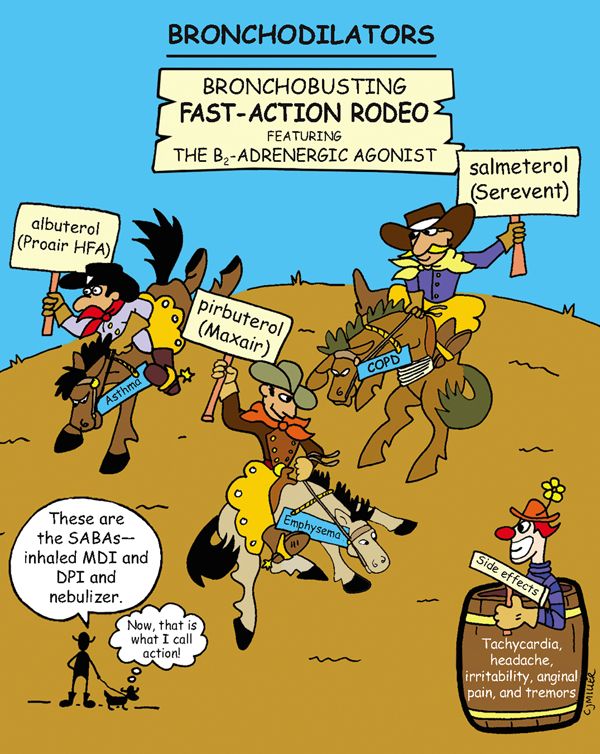Antihistamines

ACTIONS
Competitively block the H1-receptor sites and impede histamine-mediated responses. Second-generation antihistamines cause less drowsiness.
USES
• Prevent and treat seasonal allergies, decrease itching and pruritis.
• Are adjunct with epinephrine for severe allergic reaction (anaphylaxis).
• Prevent and treat motion sickness.
PRECAUTIONS
• Asthma—acute or chronic; chronic obstructive pulmonary disease (COPD)
• Pregnancy and lactation; glaucoma
• Conditions resulting in urinary retention and obstruction
SIDE EFFECTS
• Benadryl: Includes **sedation, thickening of bronchial secretions, dry mouth, drowsiness, dizziness,** and muscular weakness.
• Second generation: Minimal side effects occur—drowsiness, dry mouth, constipation, urinary retention, and headache.
• Zyrtec: May cause paradoxical reaction in children—restlessness, anxiety.
NURSING IMPLICATIONS
1. ‡Caution patient not to take antihistamines with alcohol.‡
2. diphenhydramine (Benadryl)—‡Caution patient about drowsiness because‡ of safety concerns.
3. Do not administer antihistamines within 4 days of skin testing.
Bronchodilators

ACTIONS
Short-acting beta2 agonists (SABA) are selective adrenergic agonists. Sympathomimetic agents activate the beta2-receptors to relax the smooth muscles in the bronchioles, producing dilation.
USES
• Short-acting preparations to treat acute exacerbations of asthma
• Short-term relief of bronchoconstriction caused by bronchitis, emphysema, and asthma
• Prevention of exercise-induced bronchospasm (EIB)
SIDE EFFECTS
• **Headache, nausea, restlessness, nervousness, tremors**
• Increased blood pressure (BP), heartburn, insomnia, bronchial irritation
ADVERSE OR TOXIC EFFECTS (Excessive sympathomimetic stimulation)
• Palpitations, **tachycardia,** chest pain
• Slight increase in BP, followed by a drop in BP; diaphoresis
NURSING IMPLICATIONS
1. *Evaluate patient’s respiratory status and vital signs.*
2. ‡Explain to patient which type of medication is for long-term control and which one is for short-term response. Short-term preparations are used to treat and/or to prevent immediate problems; long-term preparations are given on a schedule for maintenance.‡
3. SABA preparations are used to prevent an asthmatic attack and are not recommended for aborting an ongoing asthmatic attack.
4. *Advise patient not to use more doses than ordered.*
5. Check with health care provider before using over-the-counter medicine.
6. ‡Teach patient the correct use of inhalation devices—metered-dose inhalers (MDI), dry powder inhalers (DPI), and nebulizers.‡
Stay updated, free articles. Join our Telegram channel

Full access? Get Clinical Tree



